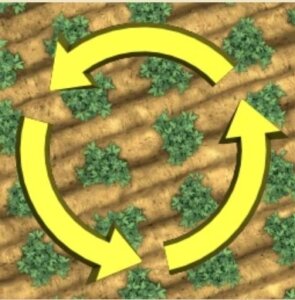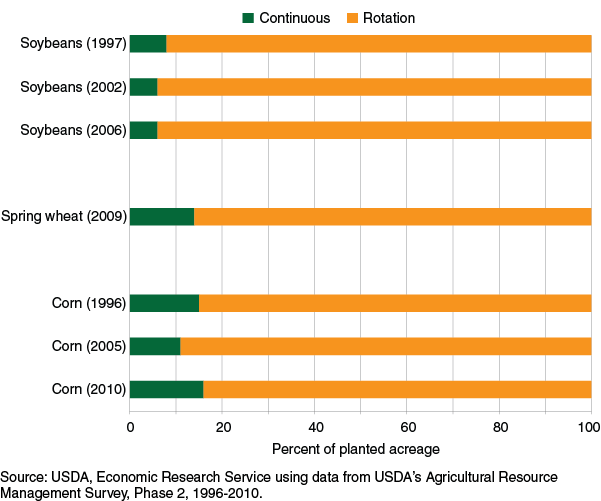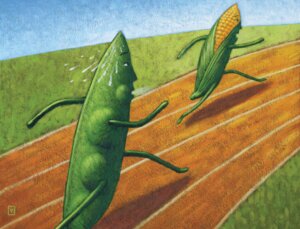 Genetic modification of agricultural crops, or green genetic engineering for short, is viewed critically by the majority of the German population. Many people reject or are even afraid of growing or eating genetically modified food, and many interest groups, parties and organizations are campaigning against green genetic engineering in Germany. But is this technology really as bad as it is made out to be? In the third season of GASBmeetsPAW, we want to talk and discuss the most common criticisms with experts and viewers in three episodes: 1. Plant protection and pesticides, 2. Biodiversity and 3. Patents.
Genetic modification of agricultural crops, or green genetic engineering for short, is viewed critically by the majority of the German population. Many people reject or are even afraid of growing or eating genetically modified food, and many interest groups, parties and organizations are campaigning against green genetic engineering in Germany. But is this technology really as bad as it is made out to be? In the third season of GASBmeetsPAW, we want to talk and discuss the most common criticisms with experts and viewers in three episodes: 1. Plant protection and pesticides, 2. Biodiversity and 3. Patents.
In keeping with the first episode on March 24, 2022 (registration here !), I have ventured in this article to put one of the most common statements made by critics of green genetic engineering on the subject of crop protection and pesticides to the test and to compile the relevant background facts.
“More green genetic engineering leads to more monocultures!”
In order to be able to assess this statement, one must first understand what monocultures actually are. A monoculture is characterized by two characteristics [1]:
- Only one type of crop is grown in a given area , such as a field of wheat. However, this alone does not make a monoculture, but is called “pure culture” in agricultural jargon. This is one of the most common misunderstandings in the public debate on this topic. Mixed cultures are opposed to pure cultures, eg growing carrots and onions in alternating rows in a field. The clear advantage of pure cultures compared to mixed cultures is the simpler handling when sowing, inventory management, harvesting and marketing the products. If only carrots grow in a field, the farmer only needs to consider the needs of this crop in terms of sowing, fertilization, crop protection and harvest time, only needs the equipment designed for this and can specialize in the processing and marketing of a single product. However, the disadvantage is that higher biodiversity in the field and thus potentially beneficial interactions between more different species have to be sacrificed.
- A single crop species is grown repeatedly on the same land over a number of years . A pure culture to which this applies is a monoculture. If it is more than five years old, one speaks of a permanent crop, such as an apple orchard. The alternative to this is to grow plants in so-called “crop rotations”., i.e. to cultivate different types consecutively on a field. Although the latter requires the farmer to have equipment, expertise and marketing channels for more than one crop, it has a decisive advantage: different plant species extract different nutrients from the soil and are hosts to different plant pests and diseases. Crop rotation thus makes an important contribution to using fertilizers efficiently, preventing one-sided leaching of the soil and preventing the proliferation of specific pathogens.

What role does green genetic engineering play in all of this? The assertion “More green genetic engineering leads to more monocultures!” is a frequent occurrence in discussions about genetic engineering and, based on the definition above, now states that the use of green genetic engineering leads to less cultivation in mixed cultures and/or crop rotation. But is that really the case?
First of all, important for classification: mixed cultures (i.e. the opposite of pure cultures) make up only a minimal percentage of current agriculture because the cultivation of different plants in one field entails numerous challenges (see above). However, this applies both to genetically modified plants and to plants bred using other methods. Theoretically, genetically modified organisms (GMOs) such as GM carrots and GM onions could also be planted in alternating rows in a field and the cultivation and harvesting would not be (even) more complicated than with conventional carrots and onions in mixed cultures. Despite all the advantages of mixed cultivation, it is simply challenging to sow, fertilize, protect and harvest two different types of plants in the same place while working economically [2]. In Germany, for example, no genetically modified plants are grown, and yet you usually only see plants of one type in a field.

If one applies both of the criteria mentioned above to define a monoculture, then mainly plantations with perennial plants such as coffee or bananas can be described as “real” monocultures. In contrast to mixed crops, crop rotations are common practice in modern agriculture [3][4], both in the conventional and in the organic sector [5]. Data from the USA is particularly suitable for investigating the influence of the cultivation of GMOs on cultivation in crop rotations, because there the proportion of GMO maize, GMO soy and GMO cotton rose sharply between 2000 and 2013 [6]. (see Figure 1). While genetically engineered soy accounted for only about half of total soy crops in the US in 2000, it’s been over 90% since 2007.

Interestingly, the proportion of permanent cultivation of soybeans in “real” monocultures compared to cultivation in crop rotation did not increase in the comparable period (1997-2006), but rather decreased slightly [4] (see Figure 2 ). Even more extreme was the increase in GMO maize from about 25% in 2000 to about 90% in 2011 [6] (see Figure 1). Even this enormous increase did not result in less maize cultivation with crop rotation, the figures for 1996 and 2010 are almost identical [4] (see Figure 2).

But crop rotation is not the same as crop rotation , because it makes a difference between how many different plant species are switched and how complex the crop rotation is designed. Especially with cultivation in the USA, criticism has been leveled at the fact that the variety of cultivated crops continues to decrease and that individual regions only cultivate a very limited number of different plants. An example is the Corn Belt in the Midwest, where corn and soy are mainly grown in rotation today. Regardless of how damaging this trend towards very limited crop rotation is, it is not due to the introduction of GMOs, but started much earlier [7] (see Figure 3): Since the 1930s in Iowa, Indiana and Illinois, the proportion of soy ( Soy ) has been increasing, displacing other crops such as oats ( Oats ), wheat ( Wheat ), barley ( Barley ) and rye ( Rye ), while the proportion has increased cultivated maize ( corn ) from 1929 to 2013 made up relatively constantly half of the total area under cultivation. Since the 1960s, soy and corn together have accounted for over 80% of the cultivated area, long before GMOs were even developed. In fact, since the beginning of the new millennium in the USA, their distribution does not appear to have had a significant impact on the distribution of arable land by crop.

Conclusion
Using the example of the USA, it could be shown that the introduction of GMOs has not led to an increase in monocultures compared to cultivation in crop rotation . Although the complexity of crop rotations is decreasing (eg alternating only corn and soybeans), this trend started almost a century ago in the Corn Belt and was not further fueled by the introduction of GMOs.

In summary, it can be said that the cultivation in monocultures instead of in mixed cultures, as well as in less complex crop rotations, is not caused by the use of green genetic engineering, but by the way modern agriculture is practiced . If anything, one could criticize the fact that, in particular with herbicide-tolerant GM maize and soybean varieties, such GMOs were brought onto the market in a targeted manner that perfectly matched the cultivation systems with short crop rotations that were already in place in North America.
Cultivation in mixed crops with conventional plants is just as demanding as with genetically modified varieties, and GMOs can also be cultivated in complex crop rotations. So the debate about monoculture should be less about how varieties were bred and more about what combinations of plant species should be grown in a field to reap the benefits of intercropping. Plant breeding can make a contribution here, for example by synchronizing the harvest times of different crops. When choosing suitable varieties, GMOs could even be part of the solution!
Margareta Hellman is a doctoral student at the Institute for Biology and Biotechnology of Plants in Münster, Germany. Margareta is also a member of the prestigious Studienstiftung and publishes interdisciplinary science articles. You can follow Margareta on Twitter @ma_hellmann
This article was has been translated from German and edited for clarity. A version of this article was posted on Progressive Agricultural Reform used here with permission. You can check out Progressive Agricultural Reform on Twitter @ProgAgrarwende































